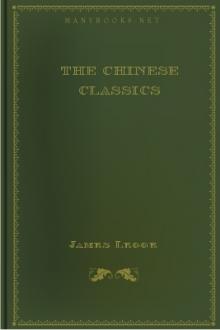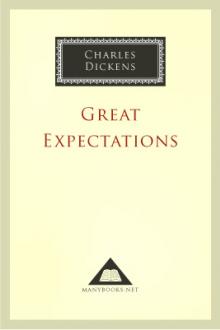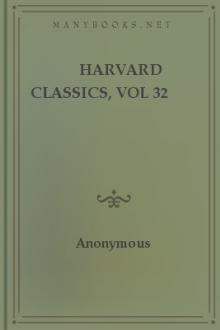The Chinese Classics (Prolegomena) by James Legge (e novels to read .txt) 📕

- Author: James Legge
- Performer: -
Book online «The Chinese Classics (Prolegomena) by James Legge (e novels to read .txt) 📕». Author James Legge
1730, by Wang Fu [al. K’eh-fu] (���_ [al. �J��]). Every page is divided into two parts. Below, we have the text and Chu Hsi’s commentary. Above, we have an analysis of every chapter, followed by a paraphrase of the several paragraphs. To the paraphrase of each paragraph are subjoined critical notes, digested from a great variety of scholars, but without the mention of their names. A list of 116 is given who are thus laid under contribution. In addition, there are maps and illustrative figures at the commencement; and to each Book there are prefixed biographical notices, explanations of peculiar allusions, &c.
�s�W�|��������������, ‘The Four Books, with a
Complete Digest of Supplements to the Commentary, and additional Suggestions. A new edition, with Additions.’ By Tu Ting-chi (���w��). Published A.D. 1779. The original of this Work was by Tang Lin (�H�L), a scholar of the Ming dynasty. It is perhaps the best of all editions of the Four Books for a learner. Each page is divided into three parts. Below, is the text divided into sentences and members of sentences, which are followed by short glosses. The text is followed by the usual commentary, and that by a paraphrase, to which are subjoined the Supplements and Suggestions. The middle division contains a critical analysis of the chapters and paragraphs; and above, there are the necessary biographical and other notes.
�|��������, ‘The Four Books, with the Relish of the Radical Meaning.’ This is a new Work, published in 1852. It is the production of Chin Ch’ang, styled Chi’u-t’an (���J, �r����), an officer and scholar, who, returning, apparently to Canton province, from the North in 1836, occupied his retirement with reviewing his literary studies of former years, and employed his sons to transcribe his notes. The writer is fully up in all the commentaries on the Classics, and pays particular attention to the labours of the scholars of the present dynasty. To the Analects, for instance, there is prefixed Chiang Yung’s History of Confucius, with criticisms on it by the author himself. Each chapter is preceded by a critical analysis. Then follows the text with the standard commentary, carefully divided into sentences, often with glosses, original and selected, between them. To the commentary there succeeds a paraphrase, which is not copied by the author from those of his predecessors. After the paraphrase we have Explanations (��). The book is beautifully printed, and in small type, so that it is really a multum in parvo, with considerable freshness.
�����|���q��, ‘A Paraphrase for Daily Lessons, Explaining the Meaning of the Four Books.’ This work was produced in 1677, by a department of the members of the Han-lin college, in obedience to an imperial rescript. The paraphrase is full, perspicuous, and elegant.
�s�s�P������; ���g�����J��; ���g�����J��; ���O�q��; �K�������J��. These works form together a superb edition of the Five Ching, published by imperial authority
in the K’ang-hsi and Yung-chang reigns. They contain the standard views (��); various opinions (��); critical decisions of the editors (��) ; prolegomena; plates or cuts; and other apparatus for the student.
�����e��������, ‘The Collected Writings of Mao Hsi-ho.’ See prolegomena, p. 20. The voluminousness of his Writings is understated there. Of �g��, or Writings on the Classics, there are
236 sections, while his ����, or other literary compositions, amount to 257 sections. His treatises on the Great Learning and the Doctrine of the Mean have been especially helpful to me. He is a great opponent of Chu Hsi, and would be a much more effective one, if he possessed the same graces of style as that ‘prince of literature.’
�|�����l��, ‘A Collection of Supplemental Observations on the Four Books.’ The preface of the author, Ts’ao Chih-shang (���� ��), is dated in 1795, the last year of the reign of Ch’ien-lung. The work contains what we may call prolegomena on each of the Four Books, and then excursus on the most difficult and disputed passages. The tone is moderate, and the learning displayed extensive and solid. The views of Chu Hsi are frequently well defended from the assaults of Mao Hsi-ho. I have found the Work very instructive.
�m������, ‘On the Tenth Book of the Analects, with Plates.’ This Work was published by the author, Chiang Yung (����), in the twenty-first Ch’ien-lung year, A.D. 1761, when he was seventy-six years old. It is devoted to the illustration of the above portion of the Analects, and is divided into ten sections, the first of which consists of woodcuts and tables. The second contains the Life of Confucius, of which I have largely availed myself in the preceding chapter. The whole is a remarkable specimen of the minute care with which Chinese scholars have illustrated the Classical Books
�|�����a; �|�����a��; �|�����a�S��; �|�����a�T��. We may call these volumes— ‘The Topography of the Four Books; with three Supplements.’ The Author’s name is Yen Zo-ch’u (�F�Y��). The first volume was published in 1698, and the second in 1700. I have not been able to find the dates of publication of the other two, in which there is more biographical and general matter than topographical. The author apologizes for the inappropriateness of their titles by saying that he could not
help calling them Supplements to the Topography, which was his ‘first love.’
���M�g��, ‘Explanations of the Classics, under the Imperial Ts’ing Dynasty.’ See above, p. 20. The Work, however, was not published, as I have there supposed, by imperial authority, but under the superintendence, and at the expense (aided by other officers), of Yuan Yuan (����), Governor-general of Kwang-tung and Kwang-hsi, in the ninth year of the last reign, 1829. The publication of so extensive a Work shows a public spirit and zeal for literature among the high officers of China, which should keep foreigners from thinking meanly of them.
���l�a�y, ‘Sayings of the Confucian Family.’ Family is to be taken in the sense of Sect or School. In Liu Hsin’s Catalogue, in the subdivision devoted to the Lun Yu, we find the entry:— ‘Sayings of the Confucian Family, twenty-seven Books,’ with a note by Yen Sze-ku of the T’ang dynasty,— ‘Not the existing Work called the Family Sayings.’ The original Work was among the treasures found in the wall of Confucius’s old house, and was deciphered and edited by K’ung An-kwo. The present Work is by Wang Su of the Wei (�Q) dynasty, grounded professedly on the older one, the blocks of which had suffered great dilapidation during the intervening centuries. It is allowed also, that, since Su’s time, the Work has suffered more than any of the acknowledged Classics. Yet it is a very valuable fragment of antiquity, and it would be worth while to incorporate it with the Analects. My copy is the edition of Li Yung (���e), published in
1780. I have generally called the Work ‘Narratives of the School.’
�t�q��������, ‘Sacrificial Canon of the Sage’s Temples, with Plates.’ This Work, published in 1826, by Ku Yuan, styled Hsiang-chau (�U�J, �r����), is a very painstaking account of all the Names sacrificed to in the temples of Confucius, the dates of their attaining to that honour, &c. There are appended to it Memoirs of Confucius and Mencius, which are not of so much value.
�Q�l����, ‘The Complete Works of the Ten Tsze.’ See Morrison’s Dictionary, under the character �l. I have only had occasion, in connexion with this Work, to refer to the writings of Chwang-tsze (���l) and Lieh-tsze (�C�l). My copy is an edition of
1804.
���N�W���C�k���m��, ‘A Cyclopaeia of Surnames, or Biographical Dictionary, of the Famous Men and Virtuous Women of the Successive Dynasties.’ This is a very notable work of its class; published in 1793, by �����~, and extending through 157 chapters or Books.
���m�q��, ‘General Examination of Records and Scholars.’ This astonishing Work, which cost its author, Ma Twan-lin (�����{), twenty years’ labour, was first published in 1321. Remusat says,- - ‘This excellent Work is a library in itself, and if Chinese literature possessed no other, the language would be worth learning for the sake of reading this alone.’ It does indeed display all but incredible research into every subject connected with the Government, History, Literature, Religion, &c., of the empire of China. The author’s researches are digested in 348 Books. I have had occasion to consult principally those on the Literary Monuments, embraced in seventy-six Books, from the 174th to the
249th.
���U�L�g�q��, ‘An Examination of the Commentaries on the Classics,’ by Chu I-tsun. The author was a member of the Han-lin college, and the work was first published with an imperial preface by the Ch’ien-lung emperor. It is an exhaustive work on the literature of the Classics, in 300 chapters or Books.’
�����m�q��, ‘A Continuation of the General Examination of Records and Scholars.’ This Work, which is in 254 Books, and nearly as extensive as the former, was the production of Wang Ch’i (����), who dates his preface in 1586, the fourteenth year of Wan-li, the style of the reign of the fourteenth emperor of the Ming dynasty. Wang Ch’i brings down the Work of his predecessor to his own times. He also frequently goes over the same ground, and puts things in a clearer light. I have found this to be the case in the chapters on the classical and other Books.
�G�Q�|�v, ‘The Twenty-four Histories.’ These are the imperially-authorized records of the empire, commencing with the ‘Historical Records,’ the work of Sze-ma Ch’ien, and ending with the History of the Ming dynasty, which appeared in 1742, the result of the joint labours of 145 officers and scholars of the present dynasty. The extent of the collection may be understood from this, that my copy, bound in English fashion, makes sixty-three volumes, each one larger than this. No nation has a history so thoroughly digested; and on the whole it is trustworthy. In preparing this volume, my necessities have been confined mostly to the Works of Sze-ma Ch’ien, and his successor, Pan Ku (�Z�T), the Historian of the first Han dynasty.
���N���O��, ‘The Annals of the Nation.’ Published by imperial authority in 1803, the eighth year of Ch’ia-ch’ing. This Work is invaluable to a student, being, indeed, a collection of chronological tables, where every year, from the rise of the Chau dynasty, B.C. 1121, has a distinct column to itself, in which, in different compartments, the most important events are noted. Beyond that date, it ascends to nearly the commencement of the cycles in the sixty-first year of Hwang-ti, giving — not every year, but the years of which anything has been mentioned in history. From Hwang-ti also, it ascends through the dateless ages up to P’an-ku, the first of mortal sovereigns.
���N������, ‘The Boundaries of the Nation in the successive Dynasties.’ This Work by the same author, and published in 1817, does for the boundaries of the empire the same service which the preceding renders to its chronology.
���N�u����, ‘The Topography of the Nation in the successive Dynasties.’ Another Work by the same author, and of the same date as the preceding.
___________________________
The Dictionaries chiefly consulted have been:—
The well-known Shwo Wan (�������r), by Hsu Shan, styled Shu-chung (��V, �r����), published in A.D. 100; with the supplement (����) by Hsu Ch’ieh (�}��), of the southern Tang dynasty. The characters are arranged in the Shwo Wan under 540 keys or radicals, as they are unfortunately termed.
The Liu Shu Ku (�����G), by Tai T’ung, styled Chung-ta (����, �r���F), of our thirteenth century. The characters are arranged in it, somewhat after the fashion of the R Ya (p. 2), under six general divisions, which again are subdivided, according to the affinity of subjects, into various categories.
The Tsze Hui (�r�J), which appeared in the Wan-li (�U��) reign of the Ming dynasty (1573-1619). The 540 radicals of the Shwo Wan were reduced in this to 214, at which number they have since continued.
The K’ang-hsi Tsze Tien (�d���r��), or Kang-hsi Dictionary, prepared by order of the great K’ang-hsi emperor in





Comments (0)